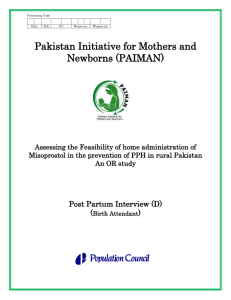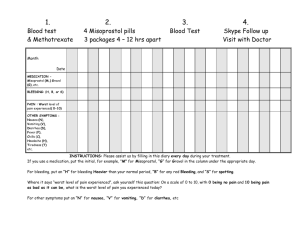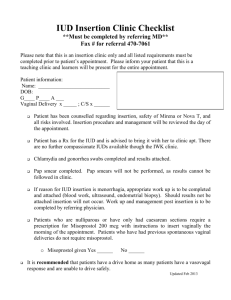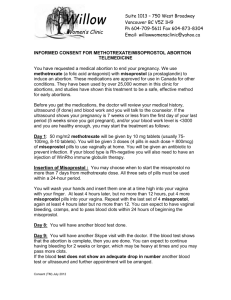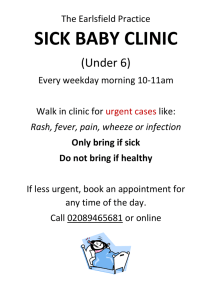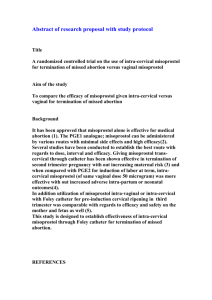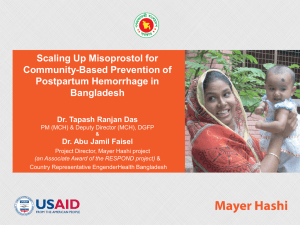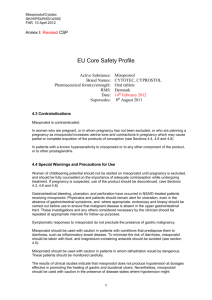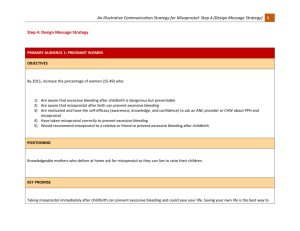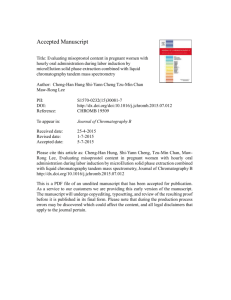miso_expansion_guide_formatted_annex_d.
advertisement
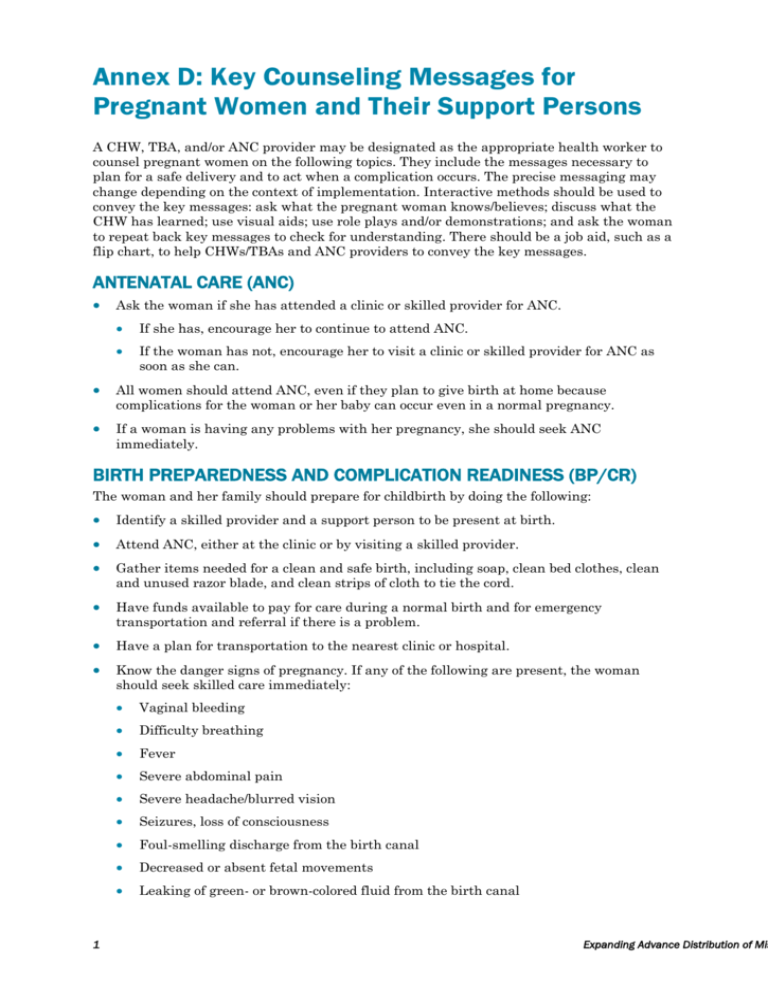
Annex D: Key Counseling Messages for Pregnant Women and Their Support Persons A CHW, TBA, and/or ANC provider may be designated as the appropriate health worker to counsel pregnant women on the following topics. They include the messages necessary to plan for a safe delivery and to act when a complication occurs. The precise messaging may change depending on the context of implementation. Interactive methods should be used to convey the key messages: ask what the pregnant woman knows/believes; discuss what the CHW has learned; use visual aids; use role plays and/or demonstrations; and ask the woman to repeat back key messages to check for understanding. There should be a job aid, such as a flip chart, to help CHWs/TBAs and ANC providers to convey the key messages. ANTENATAL CARE (ANC) Ask the woman if she has attended a clinic or skilled provider for ANC. If she has, encourage her to continue to attend ANC. If the woman has not, encourage her to visit a clinic or skilled provider for ANC as soon as she can. All women should attend ANC, even if they plan to give birth at home because complications for the woman or her baby can occur even in a normal pregnancy. If a woman is having any problems with her pregnancy, she should seek ANC immediately. BIRTH PREPAREDNESS AND COMPLICATION READINESS (BP/CR) The woman and her family should prepare for childbirth by doing the following: Identify a skilled provider and a support person to be present at birth. Attend ANC, either at the clinic or by visiting a skilled provider. Gather items needed for a clean and safe birth, including soap, clean bed clothes, clean and unused razor blade, and clean strips of cloth to tie the cord. Have funds available to pay for care during a normal birth and for emergency transportation and referral if there is a problem. Have a plan for transportation to the nearest clinic or hospital. Know the danger signs of pregnancy. If any of the following are present, the woman should seek skilled care immediately: 1 Vaginal bleeding Difficulty breathing Fever Severe abdominal pain Severe headache/blurred vision Seizures, loss of consciousness Foul-smelling discharge from the birth canal Decreased or absent fetal movements Leaking of green- or brown-colored fluid from the birth canal Expanding Advance Distribution of Mis What is PPH? PPH is too much bleeding after the baby is born. It is the main reason why so many women die in childbirth. It is not possible to know ahead of time whether a woman will have PPH. Some bleeding after childbirth is normal. It is often hard to know when this normal bleeding becomes too much bleeding because it may happen over a long period of time instead of all at once. If a woman gives birth at home and has too much bleeding, she could die. Her family should immediately take her to the nearest health center for treatment or for transfer to a hospital. KEY MESSAGE Danger Signs for Postpartum Hemorrhage Bleeding after childbirth that soaks one cloth or pad in less than five minutes, or more than two cloths within 30 minutes of the birth. Woman is pale and feels faint and weak. Woman has abdominal pain. If any of these signs are present, the woman and her family should go to the local health center immediately. Do not wait—delay can mean death for the woman. What Causes PPH? The woman's womb remains soft and large after the baby is born. The afterbirth does not come out completely. There are cuts on the opening of the woman's womb (cervix) or her birth canal (vagina). The womb tears open (ruptures). How to Prevent PPH The best way to prevent PPH is to give birth with a skilled provider. The skilled provider gives the woman an injection of a drug called oxytocin, delivers the afterbirth and rubs her womb to help it contract. Sometimes PPH will still happen. A skilled provider can do other things to stop the bleeding and save the woman’s life. If a woman plans to give birth at home without a skilled provider, there is a drug called misoprostol that she can take as soon as the baby is born but before the placenta comes out. Misoprostol will help her womb get smaller and prevent too much bleeding. Misoprostol has been tested in many countries around the world and is safe for the woman and baby. How to Use Misoprostol (Use the brand name in country) The woman should store misoprostol in a safe, locked place in the woman’s home. She should be sure that her support persons know where the misoprostol is stored and how to unlock the storage place. The woman should take all three pills as soon as the baby is born, but before the placenta comes out. If the placenta comes out with the baby, she should still take three tablets. If the woman is giving birth at the clinic or hospital, she should take the misoprostol with her and tell the skilled provider that she has the pills. The skilled provider will decide whether to use misoprostol. Or, if the woman arrives at the clinic or hospital and the skilled provider is not in attendance, the women should take the misoprostol as directed. 2 Expanding Advance Distribution of Mis KEY SAFETY MESSAGES The woman should not take misoprostol before the baby is born because it will harm the mother and baby. If the bleeding does not stop after she takes misoprostol, the woman should immediately go to the nearest clinic or hospital. Side Effects of Misoprostol After childbirth, it is normal for a woman to have some shivering. After taking misoprostol, the woman may have shivering for about 30 minutes. If she is uncomfortable, she should drink a cup of warm, sweet tea. These side effects do not happen often but if they do, will last only two to three hours: Vomiting Diarrhea/watery stool Low fever 3 Expanding Advance Distribution of Mis
